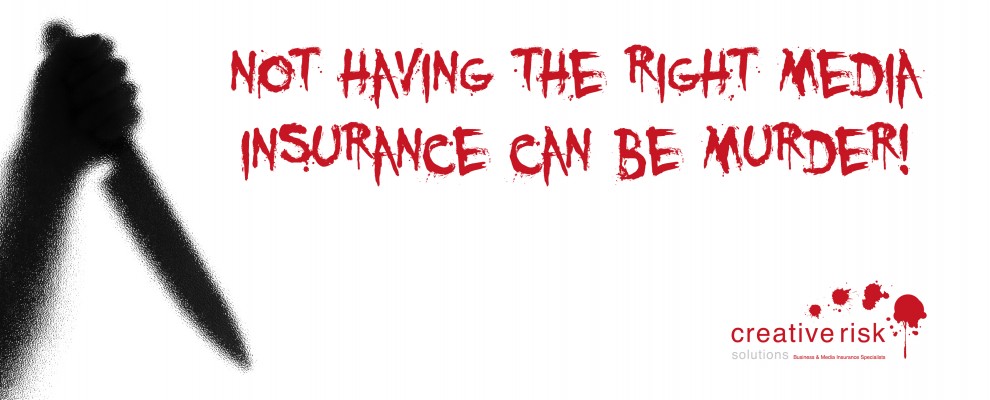Ten terrifyingly helpful tips for buying media insurance
Everyone likes a good scare. It’s why horror films and crime dramas are so popular, but if you’re organising the media insurance for a TV, film or advert production, you don’t want any unpleasant surprises.
As specialist media insurance brokers we know a thing or two about drama, or at least avoiding it. After all, we’ve insured enough of them in our time, including the acclaimed crime drama Hinterland.
Media insurance might not be exciting but it’s definitely an aspect of a production that should be organised well in advance. You know that you’re going to need it but you might not know which policy you require and what specifically needs to be covered. If something occurs that means you have to make a claim, not having the correct policy in place could cause an awful lot of problems.
With that in mind, and with a seasonally spooky theme, here are ten terrifyingly helpful tips to make buying TV, film or ad insurance a little less horrific.
Give yourself plenty of time to organise your insurance. It may be the last thing on your mind in the early stages of a production, but it’s important to organise it sooner rather than later since some aspects of the shoot may require specialist cover.
From the DoP or director to actors, animators and SFX crew, look at the people whose absence, due to an accident, illness or injury, would affect the production most and organise Cast Insurance to cover them.
Protecting your kit on a shoot is vital. It’s worth noting that most production policies won’t cover things like loss due to theft from unattended vehicles, damage to equipment caused by mechanical or electrical breakdown and that specialist equipment will require specialist cover.
Liability Insurance will be needed to cover any hazardous activities. This obviously includes things like setting people on fire, but horse riding is seen as one of the most hazardous activities on a shoot. Get a risk assessment from a bona fide specialist.
Liability Insurance will cover overseas filming but where you film has implications too. Filming in the USA and Canada requires evidence of your cover in a specific format and in some regions of the world you may require kidnap and ransom cover for your cast and crew.
Any new piece of kit will need to be reflected in your policy. Media Insurance is now catching up with new digital camera technology, which means it can be specifically included on your policy.
If you film abroad, check to see if freelancers are covered by your Travel Insurance, whether medical evacuation is included and which territories are covered. You’ll be given an emergency assistance cards or e-cards for all cast and crew.
Your Production Insurance policy won’t cover things like a brand logo that no-one spotted in the background of a shot or the faint snippet of a famous song during a scene, but Errors and Omissions Insurance will. Buy it at the pre-production stages to avoid a costly claim at the editing stages.
Whenever you use transport of any kind on a shoot, whether it’s a car, crew bus, boat, plane or killdozer, you’ll need specific coverage. Basically, if it moves and someone from the production is in it, you’ll need to get it insured.
Any stunt is the responsibility of the company or person performing it. Ask them for a risk assessment and a copy of their insurance policy then provide your own insurer with these details.
A specialist Media Insurance broker will be able to recognise what a specific production will need and help you get the right policies in place. If the worst should happen, rather than a sense of dread, you’ll have all the help you need to give a potential horror story a happy ending.




Leave a Reply
Want to join the discussion?Feel free to contribute!